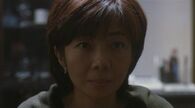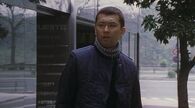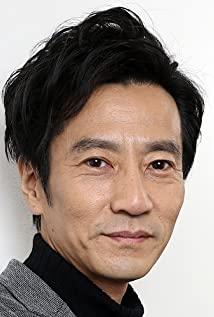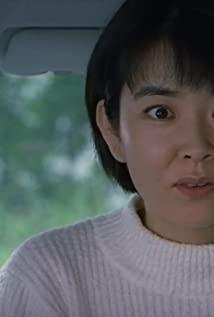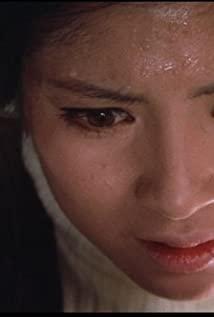There is such a story in "City of Sadness". In the Meiji era, a girl committed suicide by jumping into a waterfall. She is not disheartened, nor is she world-weary, but facing such a brilliant youth, she is afraid that once it disappears, she does not know what to do. It's better to leave the branches with the wind when life is most beautiful like a cherry blossom.
Japan is an extreme country. The simple is like authentic Japanese cuisine, and the complex is like a gorgeous geisha, but both show a slow and tidy posture like people.
Kitano Takeshi’s "Doll" uses three stories about love, a red rope, and the changing of the four seasons. It interprets the gentle but ultimate beauty of the Japanese style, and also expresses the bond between people and dolls.
Silent about the extreme stories
often real life is dull miscellaneous, three original stories in general, after zoom in and after becoming pure: salvation through the four seasons of the trip, up to a lifetime of waiting, self-destructive eyes Meet in exchange.
Love is often submerged in the trivialities of life. The extremeization of the story is like grasping the thread of love. So we see couples who are bound together walking constantly. They have almost no dialogue. They seem to be looking for something. But there is no clue. The occasional stare and hug became deeply moving in this long and simple walking.
In the extreme story, we saw an extreme character. The girl's attempted suicide affected her mind. This setting made her look like a doll. The man walked more and more silently, and finally became a person. The image of puppet. The old woman on the park bench wears her young dress. The film shows that she goes there every week on time to wait for her former sweetheart, as if she has never left. Similarly, the old woman waits repeatedly. A kind of bondage, like the red belt that binds a couple, they are bound together and can only walk non-stop, and the old woman is also bound by an invisible rope, which seems to be the promise of her youth.
The extreme treatment coupled with Kitano Takeshi's silent narration gave the three stories a different kind of temperament. It was originally a story that is easy to express emotions, but the film's narration is very calm and peaceful. Kitano's films are never impatient, even if they are violent, they can always be treated calmly. The film is more about the use of long shots and empty shots. The use of some perspectives in the scenes adds a sense of onlooker to the narrative. The composition selection is stable. The composition of the characters from the left to the right abounds. This kind of composition Very regular, but with a fateful meaning, everything is stable and cannot be changed.
The repeated appearance of the walking plot makes the walking itself a kind of plot, producing symbolic symbolic meaning. Kitano likes to use symbols, such as the image of an angel and the display of dreams. The symbol of walking was used repeatedly in "That Summer, Quiet Sea". Deaf and dumb men and women were walking on the way to the beach carrying surfboards. Their physical defects made them have no lines in the whole movie. They walked. The way is mostly one after the other. The rope connecting them is a surfboard, which is very similar to the bondage couple in "Dolls". Although they all end in death, the difference is that they are looking for the dream ahead. "Doll" is a search for the past. This simple plot setting paved the film’s narrative with a soothing and quiet tone. Using such a rhythm to tell the story of love and death itself is already an extreme.
Pure and complex
colors. Both the purity and complexity of colors can give people a strong visual impact.
Green spring, colorful summer, golden autumn, white winter. Everyone has such a concept, but if you really go to life and see that the fact is not, it may only appear in children's paintings, but this time "Doll" shows us such a pure four seasons fairy tale.
A red rope is like a thread of fate. The bound couple set off from the green spring, and their journey has passed through other people’s stories; the infatuated fan self-destroyed his eyes in order to keep the idol’s most beautiful face, he and she walked in full The scent of summer is smelled in the rose garden; the time when the triad old man replaced his former self was the season when the maple leaves were red, followed by white winter, snow covered the slopes, and the journey of binding the lovers ended.
In addition to showing the colors of the seasons in the film, there are also many brilliant colors, such as ultra-conventional clothes and kimonos that bind the couples, the masks and windmills on the walls of girls’ dreams, the stage for singers’ performances, and the colors of some small objects. They seemed to be carefully arranged, with red butterflies, yellow cars, pink toys, and paper clothes on fish in the grass.
Aesthetic and implicit death
Death is the end of life, and it is also an extreme of life. But the expression of death in "Dolls" is not direct and naked.
Although the girl Gong Tian attempted suicide, she had actually experienced a death. This episode appeared in the memory. Gong Tian’s suicide and madness used soothing music and coordinated with the upgraded shots, as well as the film’s soothing narration. Imagery lens language.
Subsequent presentations of several deaths were adopted in a subtle way, and this kind of treatment can highlight the ultimate meaning even more.
The paragraph where the blind man destroys his eyes is cruel and bloody, but the picture of the film is the smiling face on the poster of Haruna Yamaguchi. The face changes from clear to blurry, and then from blurry to clear, with a paper knife in the corner of the screen. When I saw the man again, he was already blind. This kind of treatment was somewhat similar to the story mentioned at the beginning. He did the most cruel thing for his favorite beauty. This extreme sacrifice speaks of love. Pure and profound.
The death of the old man in the underworld is what makes me most uncomfortable. A pair of old people who have missed half their lives finally meet again, but what awaits them is the eternal separation of heaven and man. The killer raised his pistol, and a red leaf quietly fell into the gentle stream. Life is like a red leaf withering, one side is death, and the other is the beautiful scenery. The sound here is completely erased, and the upgraded lens is used until the picture transitions to the red leaf falling into the water. When there is music sounded. On the one hand, this contrast is the Japanese attitude towards death, on the other hand, it also uses contrasting methods to make death appear more cruel.
The last part of death is the bondage of lovers. Although the fate of the two people has been hinted at at the beginning, the quietness of death inevitably makes people feel unacceptable. The girl finally remembered the matter of their engagement. The two seemed to have found the past in the wandering through the four seasons, and it seemed that they were about to break free from their destiny. The tragedy is to break the beautiful things for others to see. They rolled off the cliff and hung on the branches. The red rope around their waists held their weight. Time seemed to stop. For a while, I didn’t even think it was. Death, I thought it was rebirth, but the rising sun is telling us that time is still going on.
Every story fell into the Jedi again at the place where it turned around, joy turned into sorrow, but behind the beautiful picture was death. Even Kitano himself said that "this time the violence came unexpectedly." The subtle and aesthetic expression is actually the best way to express the ultimate cruelty. This time the violence is not destroying the flesh and blood, but the beautiful possibilities.
The three love stories in "Dolls", in conjunction with the puppet show at the beginning and the end, inevitably have a feeling of life like a play, and the three stories are more or less implicated because of the constraints of the couple’s walking. It's a general sense of fate. But this sense of destiny does not feel sad to me.
Everyone actually has some people, and some things cannot be given up. This unyielding sentiment has become a bondage to control their actions and even their destiny. Recalling the three stories, if the old woman forgets the promise and does not wait any longer, then the old man He will not die. If the old man in the underworld does not look back, he will not die. If a man can no longer fall in love with his idol, then he will not die. If Gong Tian can watch a little bit, or Matsumoto can be cruel, then they will not die...
"Doll" shows a kind of extreme beauty, and the extreme is like a critical point. Just like the difference between a person and a doll, the doll on the stage has no emotions and no life of its own, so it becomes a doll. People are free, they can love or hate, but it is precisely because they have their own feelings that they have more fetters, and on the contrary, they also become dolls.
The film does not put anyone in the Jedi. People become dolls because they have a soul, a heart to love, and a rope that binds them, not by imposing, but by heart.
View more about Dolls reviews



